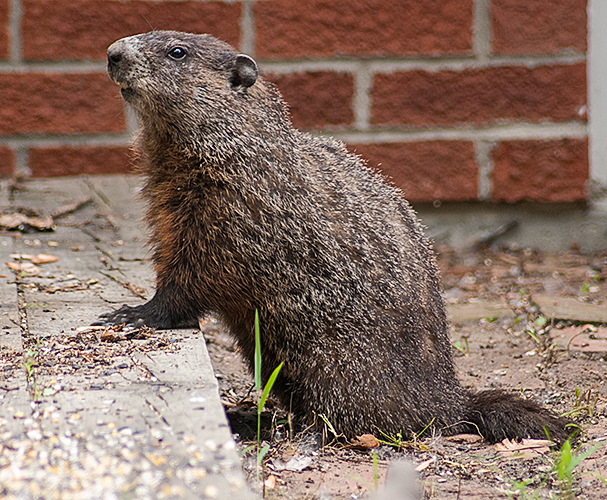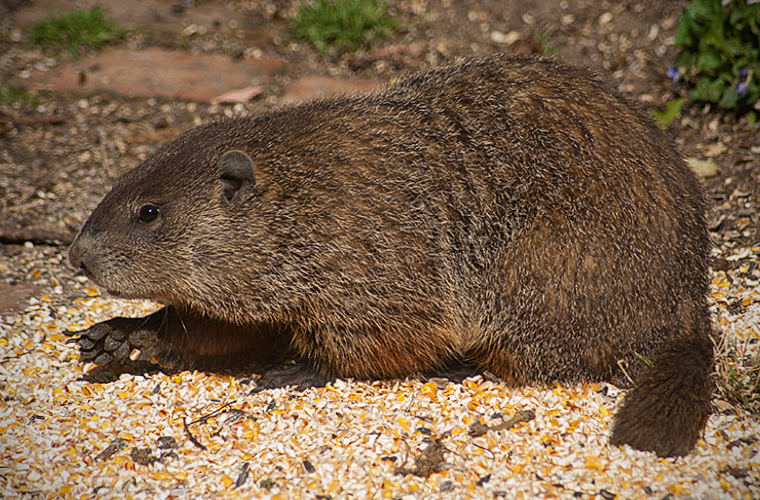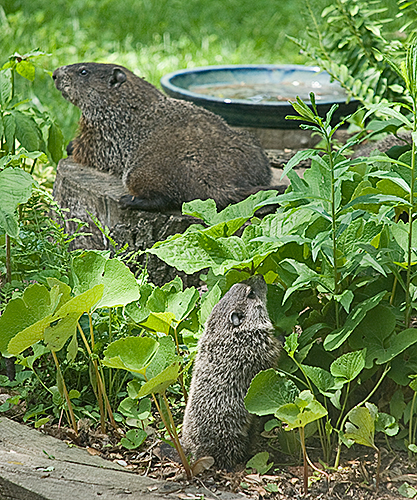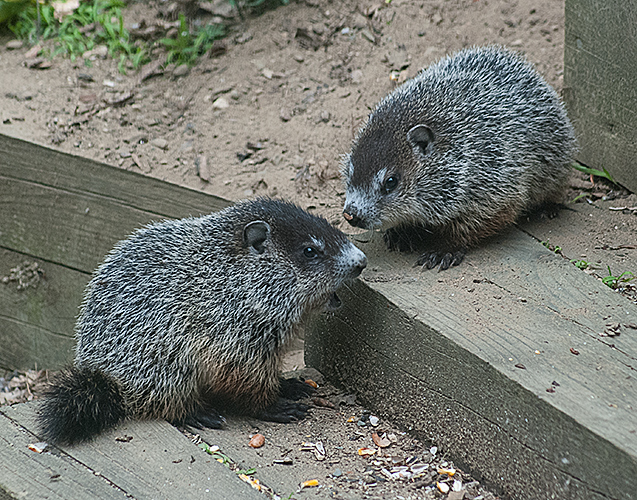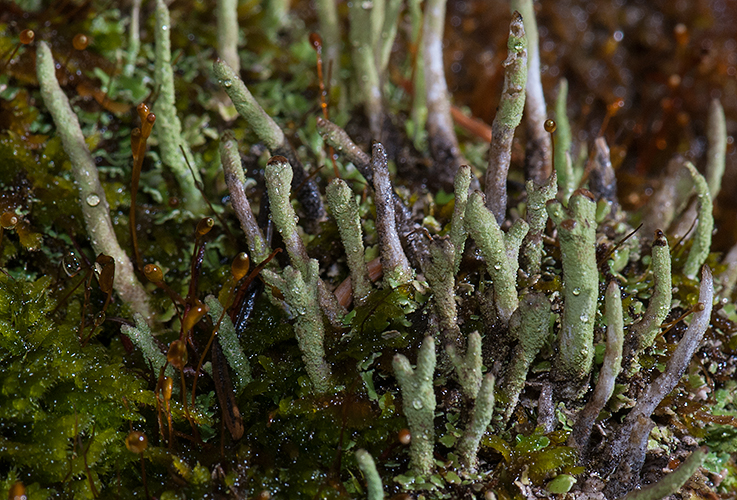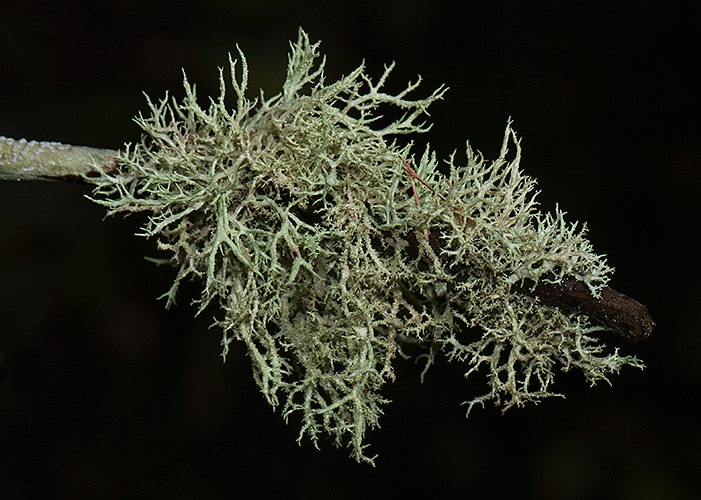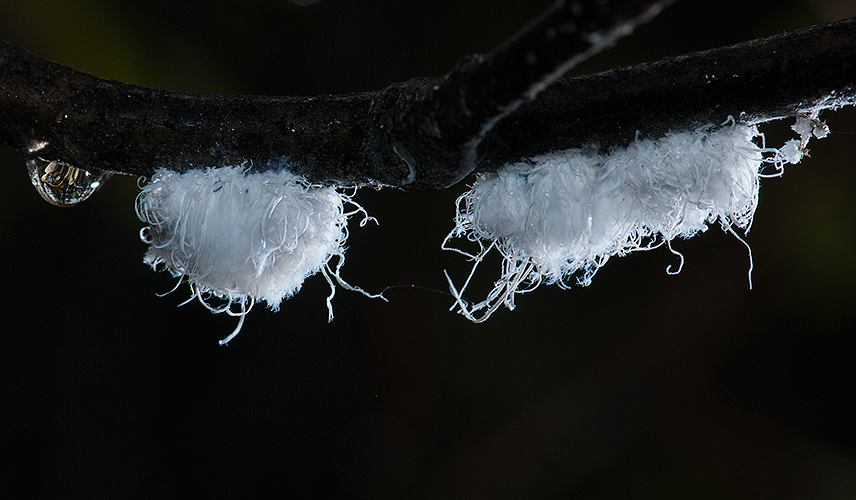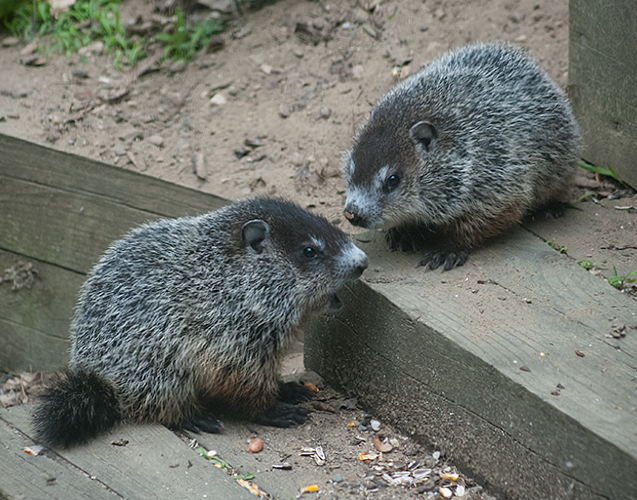The first Groundhog Day at Gobbler’s Knob, Punxsutawney, Pennsylvania, was celebrated February 2, 1887. The day was celebrated elsewhere earlier and traces its tradition back to Candlemas Day. At a special church service (a Mass), the church would bless candles. The candles indicated how long the winter would be. Germans added a hedgehog as a weather predictor and used a groundhog once they settled in America. See history.com for more information.
Groundhogs (Marmota monax) are also called Woodchucks or Whistle-pigs. They are in the Squirrel Family (Sciuridae) and occur throughout Michigan. They have two to nine young per year but the average is around four. The mother is protective of her young and will stand on her hind feet (or tent peg as I call it) and watch for danger.
A Woodchuck has lived under our deck for the 25 years we have lived in this house. My first encounter happened the first weekend we lived here. I was sitting on the ground, repairing the siding along the bottom of the garage. I felt a cold spot on the small of my back and jumped up yelling to my wife “It’s a Woodchuck.” The Woodchuck turned, whistled, and dove under the deck. I try not to anthropomorphize but I think the whistle meant, “It’s a human.”
Our resident Woodchuck has been a lone male or a female with young. Seven young is our record. I have seen a mother Woodchuck charge and tree a Raccoon that she thought was too close to one of her babies. We have a fence around our vegetable garden that they could dig under or just climb but that has never happened. They will eat wildflowers that grow in the yard. Different Woodchucks prefer different plants. Some years our Bellwort (Uvularia grandiflora) is fine, other years it is mowed flat. The adults leave certain plants alone such as the wild Iris, but the young will bite a mouthful or two to try it. The years we have young in our yard each species of plant gets bites taken from it. The young try to eat everything. Violet leaves and flowers are a favorite Woodchuck food. Lucky our “lawn” is filled with violets.
I have coexisted with our Woodchuck friends because they are entertaining to watch and they too need a place to live. Enjoy Groundhog Day but remember, no self-respecting Groundhog would be awake in Michigan on February 2nd.
Copyright 2014 by Donald Drife
Webpage Michigan Nature Guy
Follow MichiganNatureGuy on Facebook

